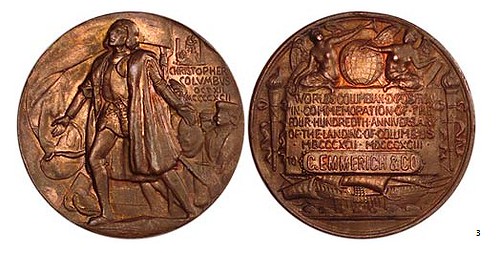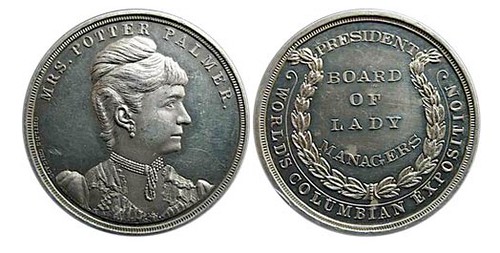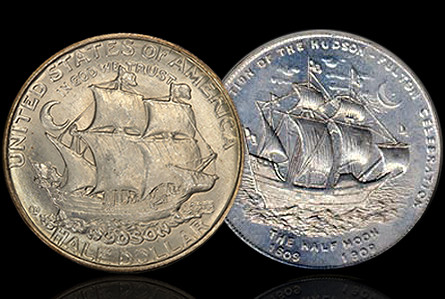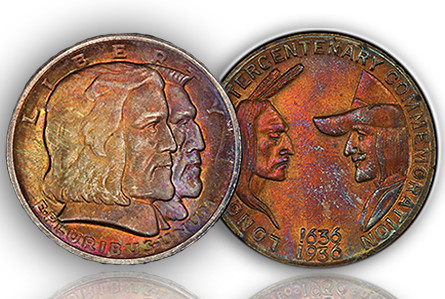
PREV ARTICLE
NEXT ARTICLE
FULL ISSUE
PREV FULL ISSUE
COMMEMORATIVES AND RELATED SO-CALLED DOLLARS
Charles Morgan and Hubert Walker published two nice articles in CoinWeek about So-Called Dollars. Here are some excerpts and selected images, but be sure to read the complete articles online.
-Editor
It is said that New York coin dealer Thomas Elder first coined the term “So-Called Dollar” to describe a medal sold at the 1904 Louisiana Purchase Exposition – an event better known as the St. Louis World’s Fair. Coin-like souvenirs such as that medal had been a staple at the many great expositions of the 19th and 20th centuries, not only capturing moments in time, but also telling the story of American industrial, technological, and cultural development. These so-called dollars were diverse in design and theme, and for many Americans they were a physical embodiment of the memories that they would take from these great spectacles. For those that experienced these expositions, souvenirs like so-called dollars symbolized hope, optimism, and participation in the success and growth of America. As the age of the Great American Expo came to an end, a growing sentiment for these souvenirs began to take shape. And for some, the emphasis was on so-called dollars. Their profile was greatly elevated with the publication in 1963 of So-Called Dollars: An Illustrated Standard Catalog, written by Harold E. Hibler and Charles V. Kappen.
 HK:223 by Augustus Saint-Gaudens and Charles Barber
HK:223 by Augustus Saint-Gaudens and Charles Barber
 HK-243c: Bertha Honoré Palmer
HK-243c: Bertha Honoré Palmer
In the first part of our story, we discussed a number of so-called dollars and commemorative coins issued during important national and international expositions, including the World’s Columbian Exposition of 1893, the Louisiana Purchase Exposition of 1904, and the Panama-Pacific Exposition of 1915. In this second part, we look at five interesting so-called dollar designs that are directly related to classic commemoratives that celebrate the same event. Some of them competed directly with the federally-issued coins. Many of them feature similar design motifs to those found on the official commemoratives, or at least found in proposals for their designs. These so-called dollars are essential collectors’ items, and their story is worth telling.

The classic commemorative series is awash with ships, none of them more stylized than Chester Beach’s rendering of the Half Moon. What’s interesting about the coin is that Beach’s Half Moon design is actually a redux of a design he used for bronze and aluminum medals struck by the Medallic Art Company for the 1609-1909 anniversary of the North American arrival of Henry Hudson’s Halve Maen. The Halve Maen (Half Moon) was secretly chartered by the Dutch to discover a direct route to China, but ended up near present-day New York (oops!). Collectors of the Hudson half dollar, one of the more coveted pieces in the series, would be remiss not to seek out its nearly identical cousins HK-383 through 385, which feature the familiar Beach design on the obverse along with inscriptions reading “IN COMMEORATION OF THE HUDSON-FULTON CELEBRATION” and “THE HALF MOON 1609-1909”. The so-called dollar’s reverse features another memorable ship, Robert Fulton’s S. S. Clermont. The Clermont, also known as “Fulton’s folly” (and quite possibly never actually called the Clermont during Fulton’s life; that’s another story), was America’s first steam ship.

The 300th anniversary of the first European settlement on present day Long Island (derived from the Dutch Lange Eylandt) was cause for a large local celebration, held from May 30th to September 7th, 1936. The Committee in charge of the celebration sought Congressional approval for a commemorative coin that would help offset the costs. Legislation for the proposed half dollar was held up until a month before the celebration, and with the Mint backed up due to numerous other commemorative projects (1936 being the peak year for the series), reduction work on Howard Weinman’s models had to be done out of house at the Medallic Art Company. Delays in production meant that the coins would not be ready in time for the event. With no coin to sell, organizers sought to issue a private medal. The Long Island Tercentenary Commemoration so-called dollar (HK694-694a) is struck on gilt copper and features the busts of a European settler and a Native American on the obverse. Unlike the coin, where the portraits are conjoined and face to the right, on the so-called dollar they face each other. The reverse features a federal eagle with a one star shield, fasces on both sides, and the inscriptions LONG ISLAND’S FIRST WHITE SETTLEMENT and 1636.
To read the complete articles, see:
Spotlight on So-Called Dollars
(www.coinweek.com/commemoratives/spotlight-on-so-called-dollars/)
To read the complete article, see:
Early American Commemoratives, Part 2: Commemoratives and Related So-Called Dollars
(www.coinweek.com/coin-guide/spotlight-called-dollars-2/)
The Numismatic Bibliomania Society is a non-profit organization promoting numismatic literature. See our web site at coinbooks.org. To submit items for publication in The E-Sylum, write to the Editor at this address: whomren@gmail.com To subscribe go to: https://my.binhost.com/lists/listinfo/esylum All Rights Reserved. NBS Home Page Contact the NBS webmaster 
|